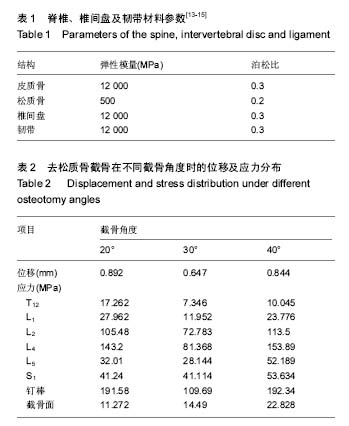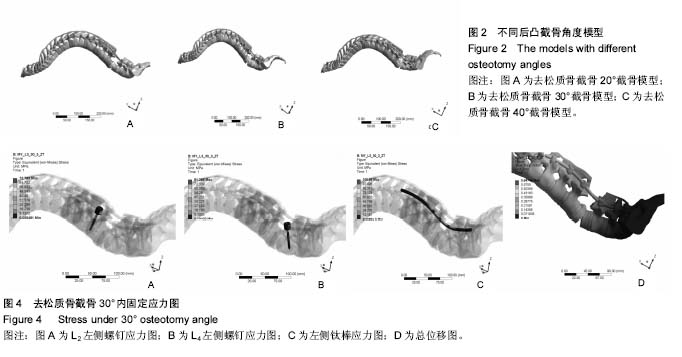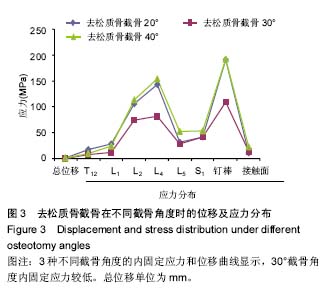| [1] 齐鹏,宋凯,张永刚,等.单节段脊柱去松质骨截骨与双节段经椎弓根截骨矫正强直性脊柱炎后凸畸形的临床效果比较[J]. 中国脊柱脊髓杂志, 2015, 25(9):775-780. [2] Braun J, Baraliakos X, Godolias G, et al. Therapy of ankylosing spondylitis–a review. Part I: Conventional medical treatment and surgical therapy. Scand J Rheumatol. 2005; 34(2):97-108. [3] 袁震.生物-心理-社会医学模式的临床应用特征(英文)[J]. 中国临床康复, 2005,9(8):140. [4] 李晏,黄烽.不容忽视强直性脊柱炎患者的精神心理异常[J]. 中华风湿病学杂志, 2012,16(2):73-76. [5] 郑国权,王岩,王景明,等.后路脊柱去松质骨截骨治疗 Pott’ s角状后凸畸形的安全性及有效性[J].中国脊柱脊髓杂志, 2016, 26(1):18-23. [6] 齐鹏,宋凯,张永刚,等.强直性脊柱炎后凸畸形个性化矫形对术后生活质量影响的相关分析[J]. 中国骨与关节杂志, 2015, 6(8): 639-643. [7] 曾岩,陈仲强,郭昭庆,等.强直性脊柱炎后凸畸形的后路截骨矫形术及疗效分析[J]. 中华外科杂志, 2010, 48(16):1234-1237. [8] Debarge R, Demey G, Roussouly P. Sagittal balance analysis after pedicle subtraction osteotomy in ankylosing spondylitis. Eur Spine J. 2011;20(5):619-625. [9] Y?ld?z F, Akgül T, Ekinci M, et al. Results of closing wedge osteotomy in the treatment of sagittal imbalance due to ankylosing spondylitis. Acta Orthop Traumatol Turc. 2016;50(1):63-68. [10] Qian B, Jiang J, Qiu Y, et al. Radiographical predictors for postoperative sagittal imbalance in patients with thoracolumbar kyphosis secondary to ankylosing spondylitis after lumbar pedicle subtraction osteotomy. Spine. 2013; 38(26): E1669-E1675. [11] Wang MY, Bordon G. Mini-open pedicle subtraction osteotomy as a treatment for severe adult spinal deformities:case series with initial clinical and radiographic outcomes. J Neurosurg Spine. 2016, 24(5):769-776. [12] Behari S, Tungeria A, Jaiswal AK, et al. The" moustache" sign: Localized intervertebral disc fibrosis and panligamentous ossification in ankylosing spondylitis with kyphosis. Neurol India. 2010;58(5): 764.[13] Burstein AH, Reilly DT, Martens M. Aging of bone tissue: mechanical properties. J Bone Joint Surg Am. 1976;58(1): 82-86. [14] Shirazi-adl SA, Shrivastava SC, Ahmed AM. Stress analysis of the lumbar disc-body unit in compression a three-dimensional nonlinear finite element study. Spine. 1984;9(2): 120-134.[15] Shirazi-Adl A, Ahmed AM, Shrivastava SC. A finite element study of a lumbar motion segment subjected to pure sagittal plane moments. J Biomech. 1986;19(4): 331-350. [16] Wang Y, Zhang YG, Zheng GQ, et al. Vertebral column decancellation for the management of rigid scoliosis: the effectiveness and safety analysis. Zhonghua wai ke za zhi. 2010;48(22): 1701-1704.[17] 刘新宇,原所茂,田永昊,等. 扩大“蛋壳”结合闭合-张开技术治疗胸腰椎角状后凸畸形[J]. 中国脊柱脊髓杂志, 2014, 24(9): 779-783.[18] 张永刚,王岩,张雪松,等.扩大蛋壳技术单纯后路切除青少年胸腰段半脊椎[J]. 脊柱外科杂志, 2007, 5(2): 69-72.[19] 张涛,陶惠人,黄景辉,等.后路全脊椎截骨治疗严重僵硬性先天性脊柱畸形神经系统并发症及其危险因素分析[J]. 中华外科杂志, 2015, 53(6):424-429.[20] Smith JS, Wang VY, Ames CP. Vertebral column resection for rigid spinal deformity. Neurosurgery. 2008;63(3): A177-A182.[21] 高梁斌,李佛保,李健,等.胸腰段脊柱后路减压脊髓血供损伤的解剖机制[J].广东医学, 2001, 22(11): 996-998.[22] 廉维帅,符伟国. Adamkiewicz 动脉的解剖与影像[J]. 上海医学影像,2011, 20(3): 245-248.[23] 辛海燕,李宇,范占明,等.多层螺旋CT血管造影显示Adamkiewicz动脉[J].中国医学影像技术, 2012, 28(9):1659-1663.[24] 李林宏.腰椎椎管的解剖,三维重建及可视化研究[D]. 重庆医科大学, 2011.[25] 鲁昌盛,刘长慧,李小玲.腰椎椎骨骨性管道与腰椎管狭窄症的解剖学基础[J]. 鄂州大学学报, 2006, 13(6): 48-49.[26] 谭希,徐永跃,邱冬妮,等. 强直性脊柱炎动物模型归类及其机制研究与进展[J]. 中国组织工程研究, 2017, 21(11): 1783-1789.[27] 赵敏菁,林智明,张萍萍,等.放射学阴性脊柱关节炎和强直性脊柱炎患者的临床特征比较和磁共振早期诊断价值[J]. 中山大学学报(医学科学版), 2015, 36(1): 12-17. |
.jpg)



.jpg)
.jpg)